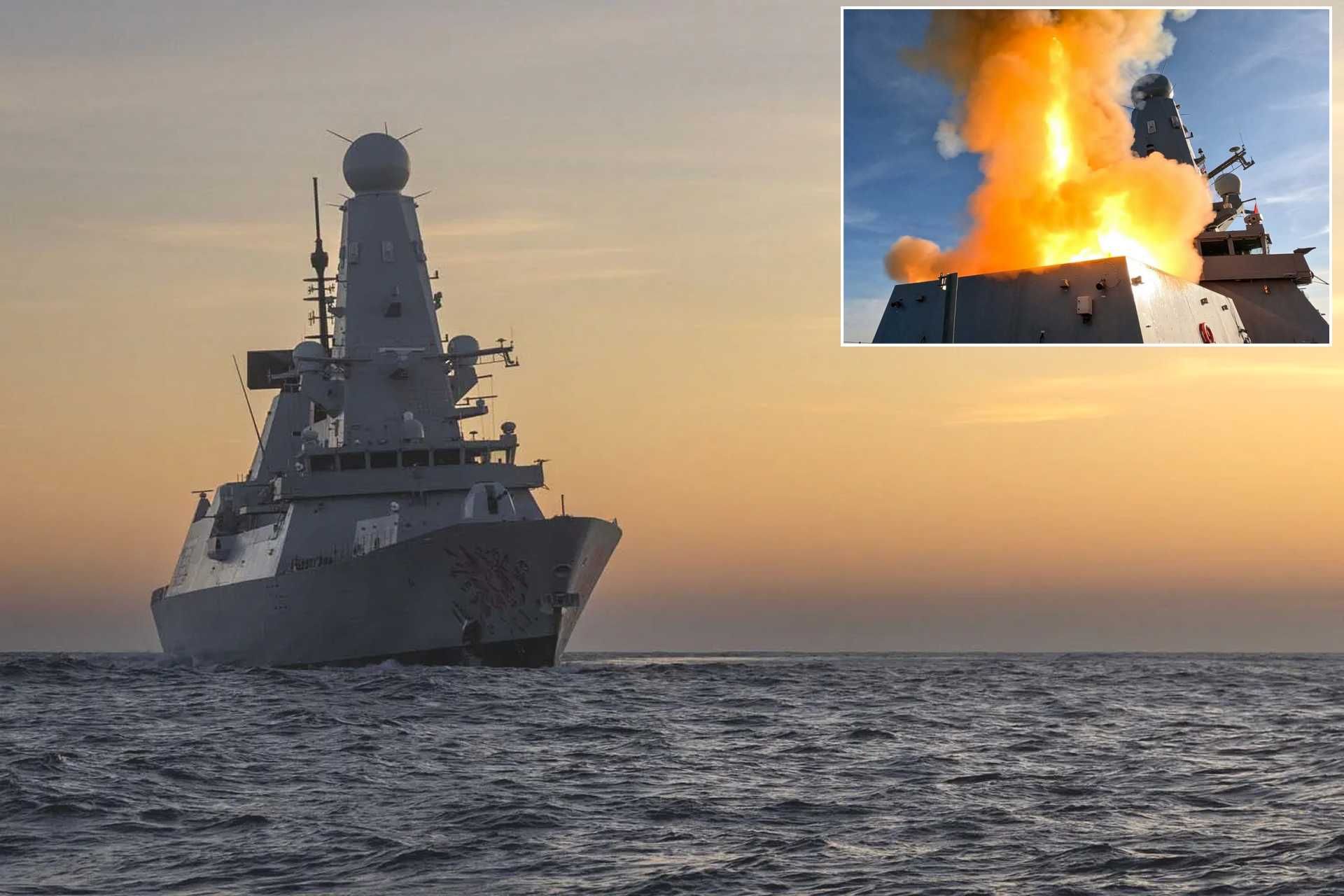Breaking News
Breaking News: British Navy Guided-Missile Destroyer HMS Dragon Intercepts Supersonic Missile for First Time.
On May 16, 2025, the British Royal Navy announced a significant advancement in its air defense capabilities with the successful interception of a supersonic missile by HMS Dragon, a Type 45 Daring-class guided-missile destroyer using the Sea Viper missile system. The engagement took place during Exercise Formidable Shield 2025, the largest integrated air and missile defense exercise in Europe, held off the coast of Scotland. This event marks the first time a British Royal Navy vessel has successfully neutralized a supersonic missile threat, underscoring the Royal Navy’s ability to address the evolving challenges of modern naval warfare.
Follow Army Recognition on Google News at this link

British Royal Navy Type 45 destroyer HMS Dragon's guided-missile destroys a high-speed aerial threat in the first-ever Royal Navy supersonic missile engagement. (Picture source: British Royal Navy)
The test involved a specially modified telemetry version of the Sea Viper missile, launched to intercept a high-speed target designed to simulate next-generation anti-ship missile threats. These targets performed complex evasive maneuvers, including corkscrews and weaving flight paths, closely resembling the behavior of advanced supersonic and hypersonic weapons currently being developed by potential adversaries. The successful interception validated not only the effectiveness of the Sea Viper system but also the destroyer's operational readiness to perform in high-intensity threat environments.
HMS Dragon is one of six Type 45 guided-missile destroyers built to serve as the Royal Navy’s primary fleet air-defense platforms. These warships are considered among the most capable of their kind globally, specifically designed to safeguard task groups, including aircraft carriers and amphibious assault ships, from sophisticated air threats. The Type 45's defensive prowess lies in its integrated combat system, based on the Principal Anti-Air Missile System (PAAMS)—referred to in UK service as Sea Viper—and its pairing with two highly advanced radar systems: the SAMPSON active electronically scanned array radar and the S1850M long-range radar. Together, these systems provide 360-degree situational awareness and enable the destroyer to track hundreds of targets simultaneously at distances exceeding 400 kilometers.
Beyond its advanced sensor suite, the Type 45 destroyer features vertical launch cells capable of deploying the Sea Viper missile system, which incorporates the MBDA Aster missile family, notably the Aster 15 and Aster 30. The Aster 15 is designed for short-to-medium range engagements, providing defense against threats up to 30 kilometers away, while the Aster 30 offers long-range interception capabilities beyond 100 kilometers. This versatility allows the Type 45 to engage a wide spectrum of aerial threats, including fighter jets, low-flying cruise missiles, and high-diving tactical ballistic missiles.
The Sea Viper system stands out for its multi-threat engagement capability. It is engineered to simultaneously track, target, and intercept multiple incoming projectiles, even those executing high-speed, evasive maneuvers from various directions. The missile uses an inertial mid-course guidance system, supported by data link updates from the ship’s radars, and switches to active radar homing in the terminal phase to achieve pinpoint accuracy. This allows it to operate effectively even in environments characterized by heavy electronic warfare activity and saturation attacks.
The successful intercept also confirms the combat system’s rapid reaction speed and resilience, which are essential in scenarios where threats may only be detected at short notice due to their low radar cross-sections or sea-skimming profiles. Moreover, the use of a telemetry version of the missile provided the Royal Navy with extensive data on flight performance, engagement dynamics, and sensor coordination, all of which are critical for refining future air defense tactics and technological development.
Type 45 destroyers like HMS Dragon are designed to fulfill a broad spectrum of missions. While their primary role is high-end fleet air defense, they are also capable of supporting counter-piracy operations, maritime interdiction, disaster relief, and anti-submarine warfare, especially when deployed with a Merlin or Wildcat helicopter. Their flexible architecture and advanced communications infrastructure enable seamless integration with multinational naval forces, making them indispensable assets in joint and coalition operations.
Exercise Formidable Shield 2025, led by the U.S. Sixth Fleet and NATO’s Maritime Command, involves eleven allied nations and focuses on enhancing joint air and missile defense capabilities. The successful participation of HMS Dragon in the exercise demonstrates the UK’s commitment to NATO’s collective defense posture and the importance of interoperability among allied forces in addressing increasingly complex and fast-evolving security threats.
As modern naval battlefields become dominated by high-speed, low-observable missile threats, the Royal Navy’s ability to intercept a supersonic missile in a realistic exercise environment marks a significant leap in operational readiness. This success reflects the Royal Navy’s emphasis on maintaining technological superiority, strengthening multinational cooperation, and ensuring the protection of maritime assets in a high-threat global security landscape.





























